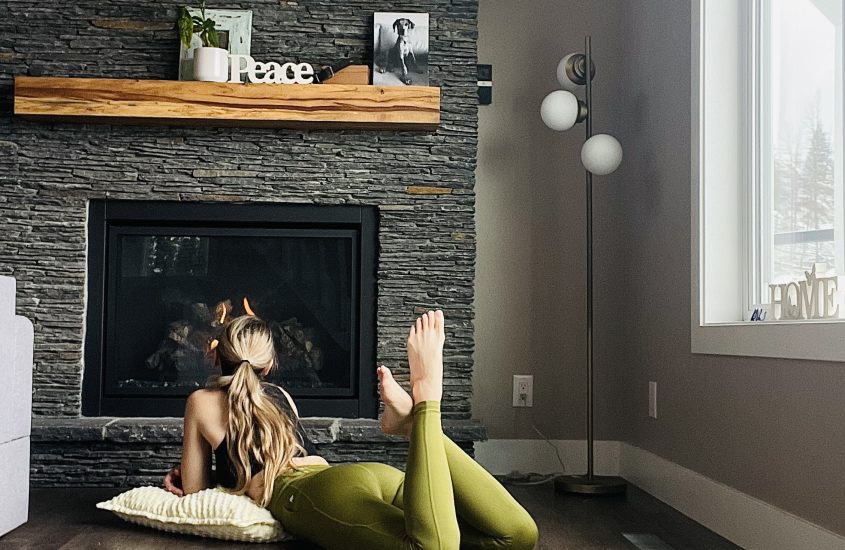NIRVANA.


Twenty-plus years ago, my Nirvana was whipping my tousled blonde hair back and forth on a sticky, smoke-filled ‘The Rift’ dancefloor to the grungy sounds of Nirvana. Usually with a R2 Black Label glass bottle in my hand. Kurt Cobain, with his equally tousled blonde locks and surfer-boy good looks, was one of the ‘it’ grunge boys. Despite a life cut tragically short, Nirvana’s music has lived on. It was a good time for music and a time when the smell of cigarette smoke clung to your hair the day after the night out. And I didn’t smoke. It sounds pretty gross, but actually, those were really, really good days. I felt magically free. Dancing, nineties music, and a non-judgemental dancefloor.
The funny thing is, despite my Nirvana obsession, I didn’t actually know what the name Nirvana meant. The youthful me didn’t even consider looking it up. Nirvana was Nirvana if you get what I mean.
Fast-forward to this date, and nirvana is something I now contemplate rather than dance to. I have a concern when I talk about such things. About nirvana, spiritual journeys, enlightenment, healing from within, affirmations, meditation, growing through adversity, letting go, and re-wiring your mind and thought processes. There is a cliché that wafts around these words that have led me to feel contrived when I write about them. These days they exist on hallway canvases, Facebook posts, and priced-to-sell T-shirts. But if we put those shiny marketing, ‘I’m so deep’ statements aside for a moment and forget that marketers latched on to them and diluted their meaning, are any of these things really attainable? And if so, how do we feel about this deeper exploration for greater understanding? Is there a chance that we feel pressure to feel a certain way, and if we don’t achieve ‘nirvana,’ do we consider that a personal failure? Firstly, if you look up what ‘nirvana’ means, you’ll get a considerable number of interpretations and also immediately feel no pressure to achieve this state. Unless you’re a monk. This is just one high-level definition (of something that can’t really be defined):
“Achieving nirvana is to make earthly feelings like suffering and desire disappear. It’s often used casually to mean any place of happiness. On the other hand, if you’re a Buddhist monk, it may take you years of meditating to reach nirvana.”
I’ve read books on ‘letting go’, ‘enlightenment’, ‘consciousness’ etc. I research the topics of spiritual journey for betterment of some of my wellness clients’ articles and blogs. I meditate, I do yoga, I have a heavenly diffuser and a buddha. It’s a world that fascinates me and, more so, baffles me. It’s complex! It’s difficult to grasp. But what I do know is that I see the difference in the yoga meditative Keryn versus the Keryn that hasn’t had a chance to fit it in because work is chaotic. I am a far better person when I have ‘zen’ elements in my space, and when I remind myself to be ‘mindful.’ But here’s the thing. We aren’t monks, saints, or Buddha himself. We’re us. Walking, talking, faltering, quirky humans, and we’re living a human life outside of a monastery.

Last time I checked, none of us had wings, although we all love to take Instagram-perfect photos in front of angel-wing-painted walls. Me included. Guess what? When you step away from the shot, the wings don’t come with you, and angels don’t usually pout. Do you know why? Because they aren’t human! You are. Pout if you want to. Wink. Get your sexy on. Go for it! You don’t need to be an angel to be a good person.
This blog was sparked by a conversation with a friend. She has begun meditating but was feeling less-than because she can’t clear her mind. No one can! Again with that whole human thing. Meditation is about bringing your awareness back to the present moment; it’s not a control-alt-delete. Your mind will wonder, and that’s ok. You will ‘let go’ of things and thoughts that you know aren’t good for you, only to find your mind obsessing with them again. You and this process are a constant work in progress. Be gentle with yourself. The whole point is that you’re striving to be better, more rounded, and more spiritual. The fact that you’re even trying makes you special! These practices are about self-love, not about achieving full marks. Honestly, wouldn’t it be a little boring if we were all walking around with dazzling halos? Let’s just be better than we were yesterday and accept that even that may involve three or four steps backward. Not every day on this journey of ‘betterment’ is a good one. Some days you may well just throw your hands up in the air, not to give gratitude for all your blessings, but rather to give that person in the traffic ‘the bird.’ Recognise those days, and try to do better the next time. Like breathe before you act, for example. That’s a key part of what mindfulness is. You become aware of your shortcomings and work on them. If that’s all you do, you would have done a lot.
In my humble opinion, giving things over to the ‘Universe’ works. I believe it, because it has worked for me. However, the Universe isn’t a genie in a bottle. Your wishes won’t just magically appear as you binge-watch Netflix, eating popcorn while the Universe heads to the store to buy your Lotto ticket. Help the lady out a little, will you?
‘Letting go’ to achieve inner peace is an interesting one. Sometimes I let go of things in meditation, only to ask for them back the next day. Because there are chapters I know I should close but just don’t feel ready to do so. Is that a failure? Honestly, I’m not sure. There are, however, some little gems that I hold on to. Words and concepts spoken in guided meditations have truly helped me interpret the perplexing concepts of inner peace, self-betterment, self-love, and so forth. I’d like to share them with you.
Standing at a crossroads. Which path do you take?
I loved this. It’s not the straight versus the windy path that we’ve heard about before. This meditation explained that either path can be taken if you take the right tools with you. You will encounter adversity and joy as you walk down either. That, quite simply, is the truth of life. The best thing you can do for yourself is to learn the ‘tools.’ There are many available, some of which include meditation and yoga. Find the ones that work for you.
Stay flexible
Brittle things break. Just look to nature. A twig will snap, a rigid branch will break, but long grass will move with the wind. The same is true of humans. If we are rigid in our thoughts, we break ourselves and others. If we feel tense and anxious, we are more likely to snap. If we don’t keep our bodies flexible, our tendons may snap, and our knees will hurt. So, work on becoming flexible in your ways, thoughts and your body. Meditate for your mind. Do Yin yoga for your body.
Letting go
This is my nemesis. I battled with this, but I’ve become far better with practice. My last two years have been all about this. So, here’s a sweet story that helped me with this process of ‘letting go.’There was a young monk battling with the art of letting go, so he asked for advice from his teacher. The wise monk handed him a cup of boiling tea and instructed the young monk to hold on to the cup. Not wanting to disappoint his teacher, he held on and on until his fingers began to burn, and he finally was forced to let go. The cup shattered on the ground. ‘You see?’ said the monk, ‘it’s not so hard to let go, is it?’ Holding on to things that burn you only brings pain. It’s harder than it sounds, but it becomes easier with practice. Try not to live in the past or the future. Work on being more ‘present.’
This, too, shall pass.
Those that have spent years on the path to enlightenment teach that true happiness lies in between. Don’t get too entranced by the highs or devasted by the lows. If we grasp that neither are permanent, then we understand why settling in the middle is where contentment resides. I often forget to apply this. Still, with this awareness, I am able to remind myself and actively try to bring myself ‘back’ to this mindset. Nothing is permanent – the good and the bad. The highs and the lows. Don’t hold on to either.
Here’s another story that explains the concept: A young monk was battling with stillness and meditation. So, (yes, you guessed it!) he went to his wise teacher. The teacher told him not to be so anxious, to keep doing what he was doing, then put his hand on the boy’s shoulder and said, ‘This shall pass’. The young monk practiced and practiced until one day, he announced excitedly to his teacher that he could sit comfortably, for a long period of time, in meditative silence. The teacher put his hand on the young monk’s shoulder and said, ‘This too shall pass.’ The message is that life ebbs, and flows, and nothing is permanent – both the good and the bad.
Wishing you health, wealth, and happiness in this new year of opportunity. Much love.
Let’s just coddiwomple
x Keryn





